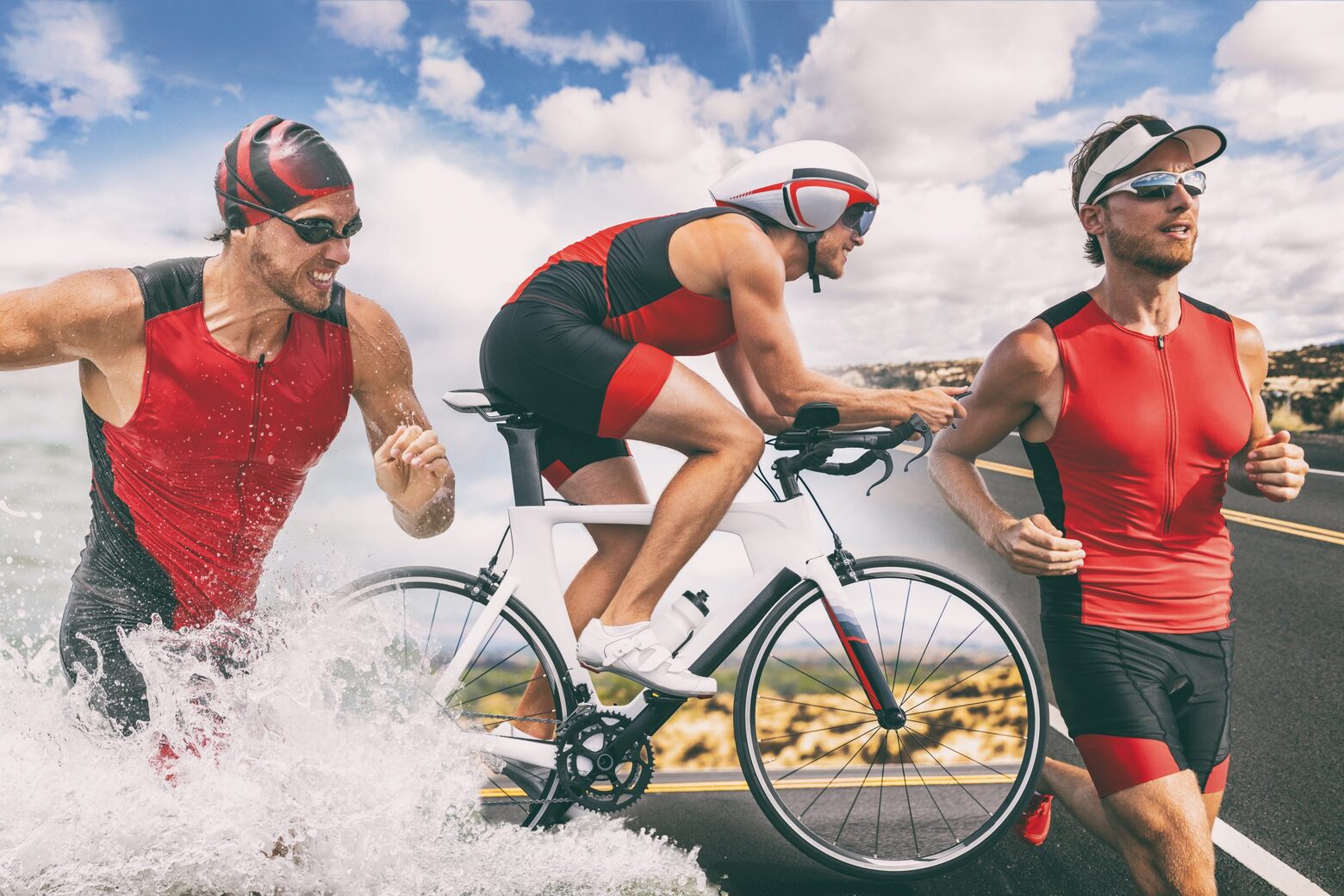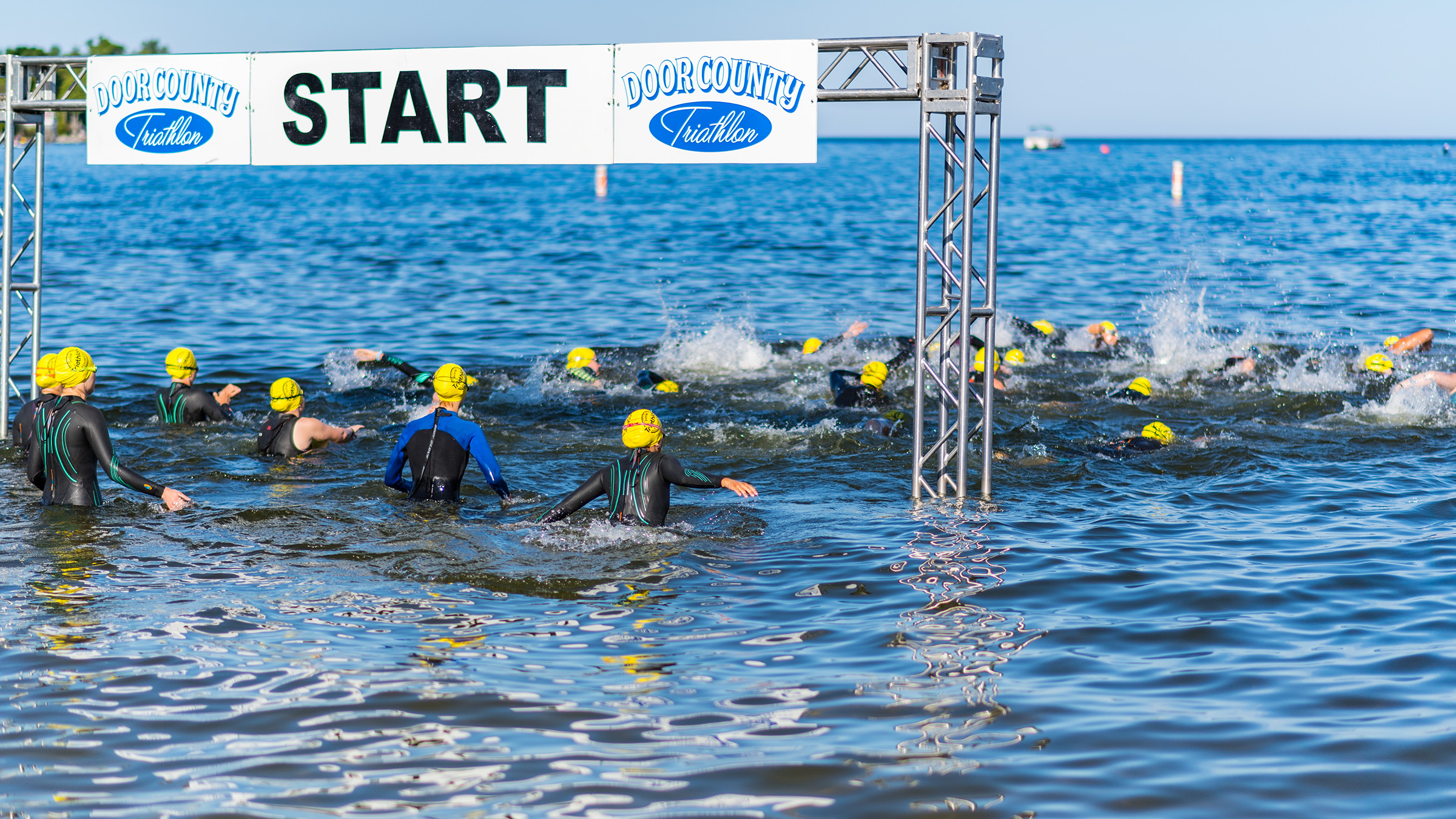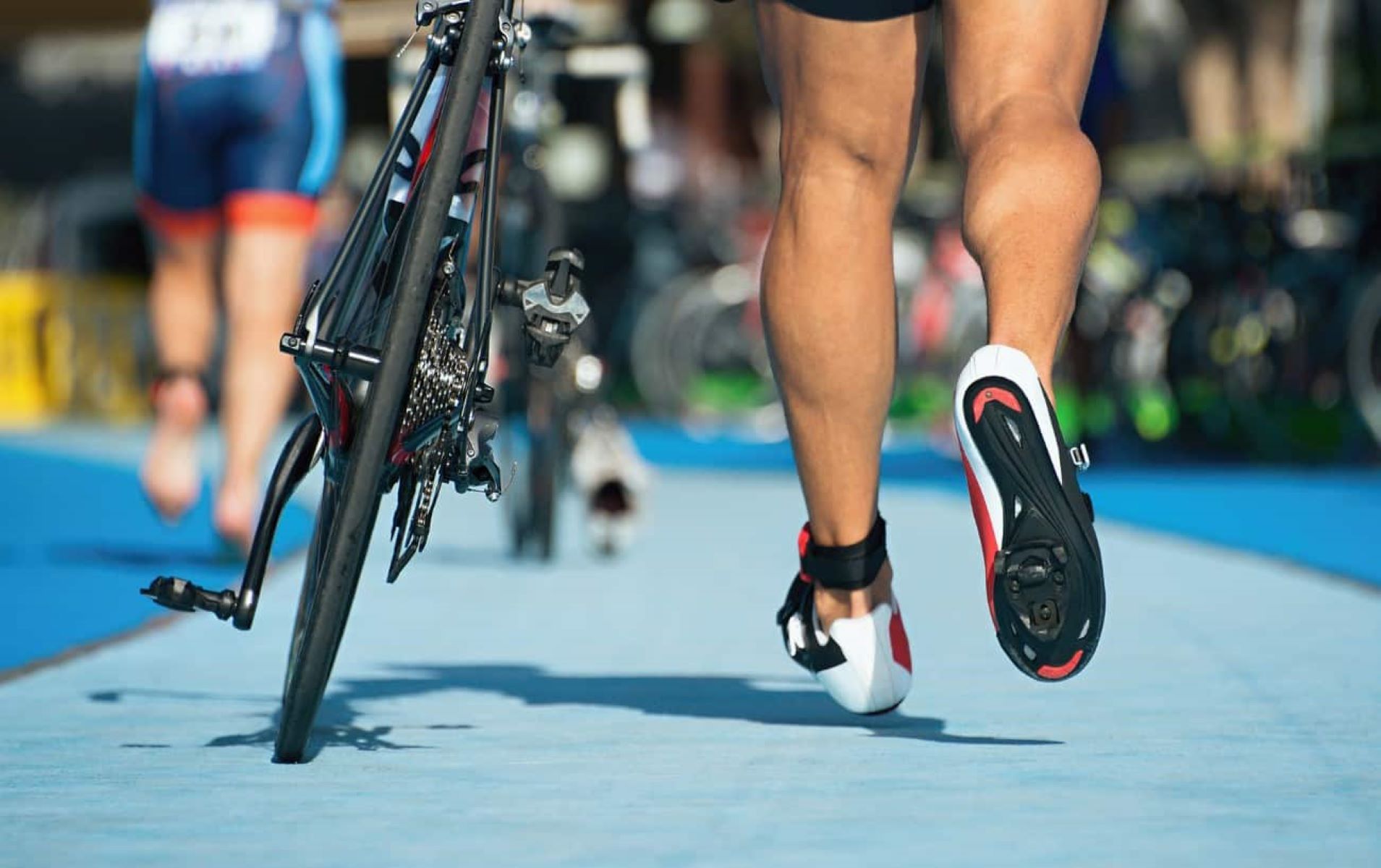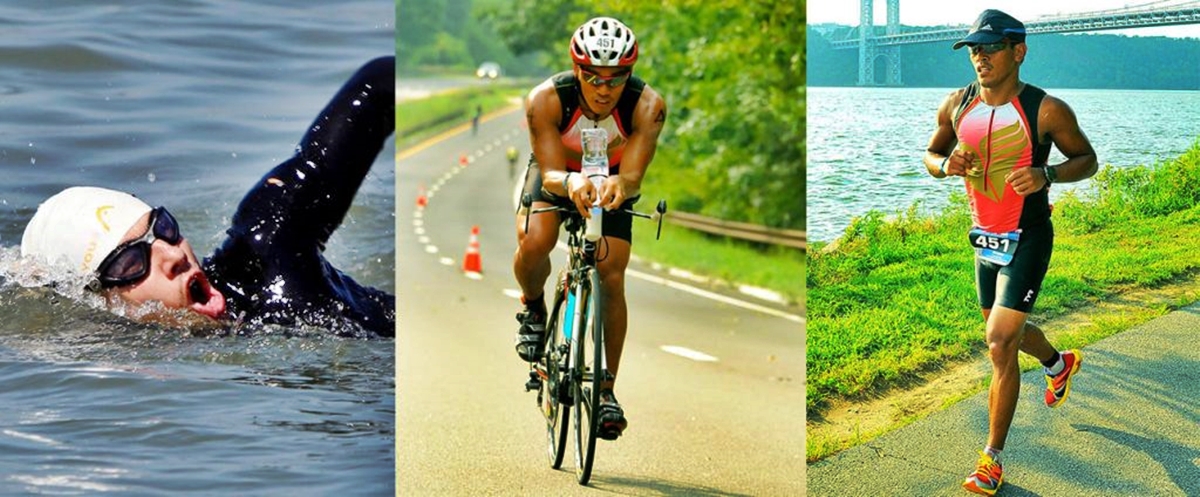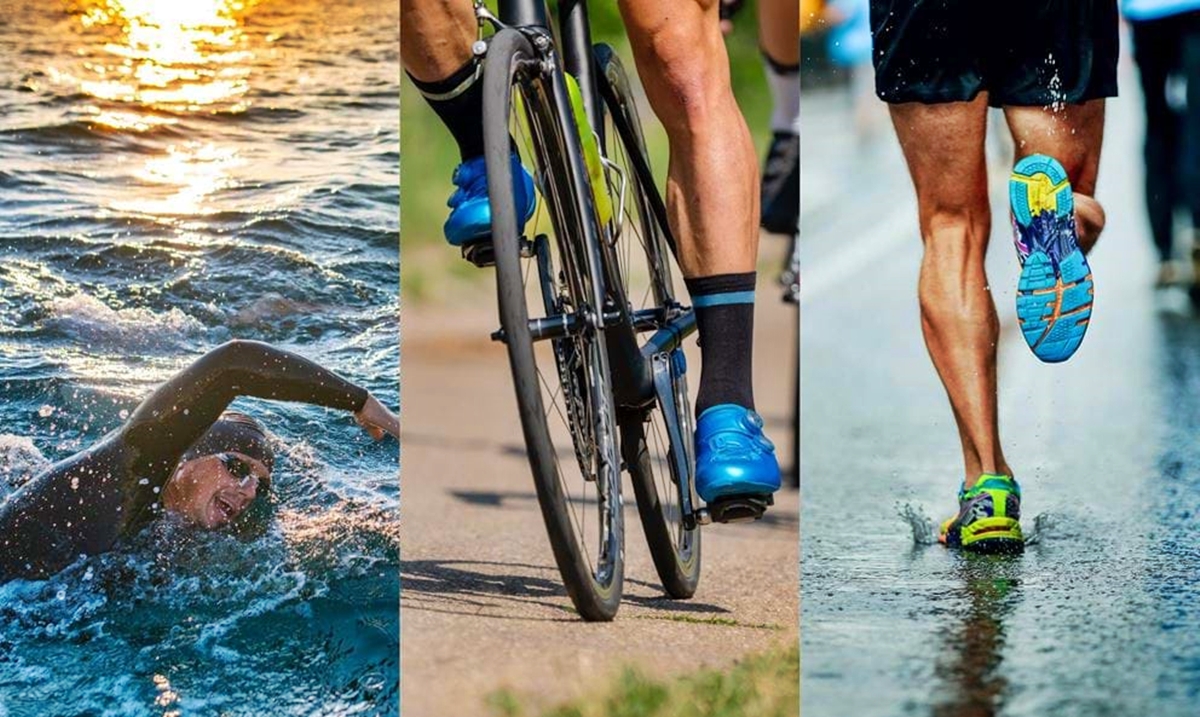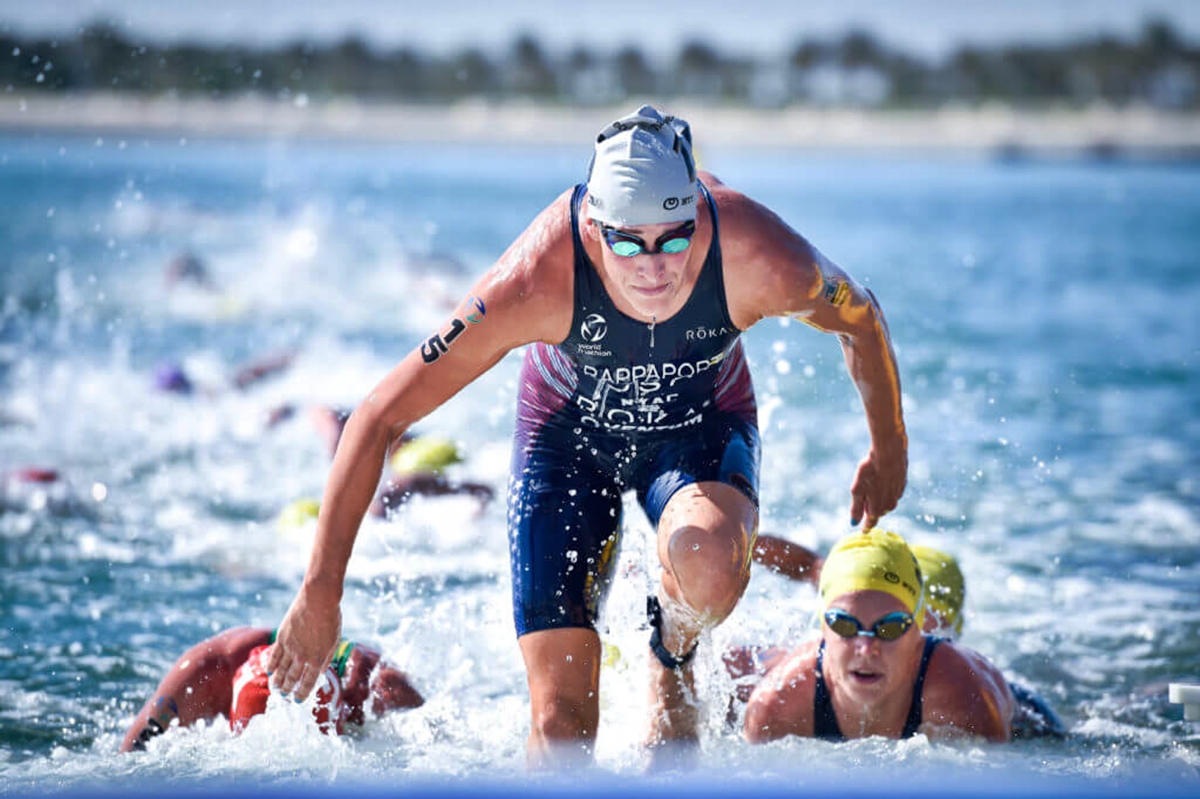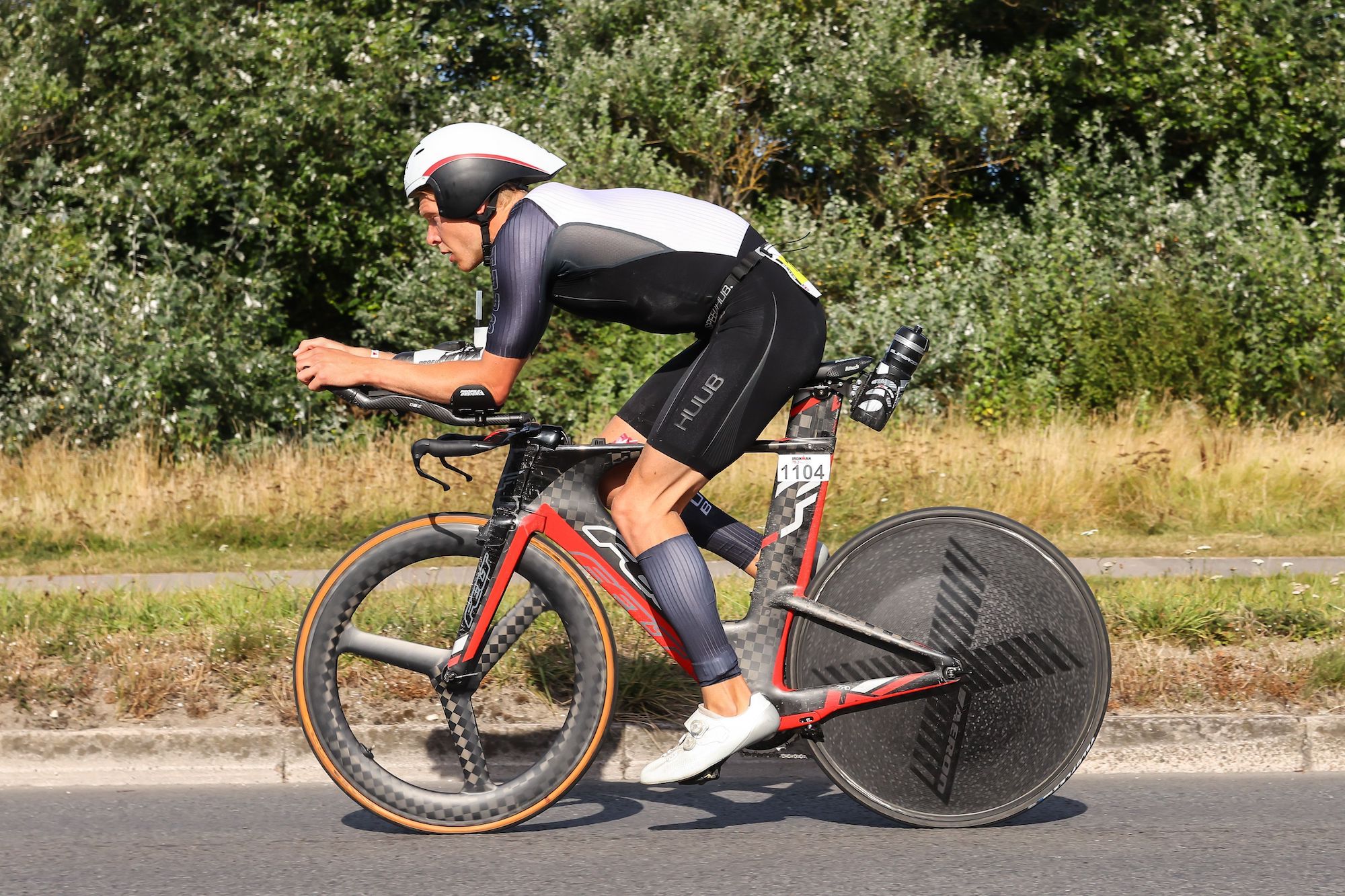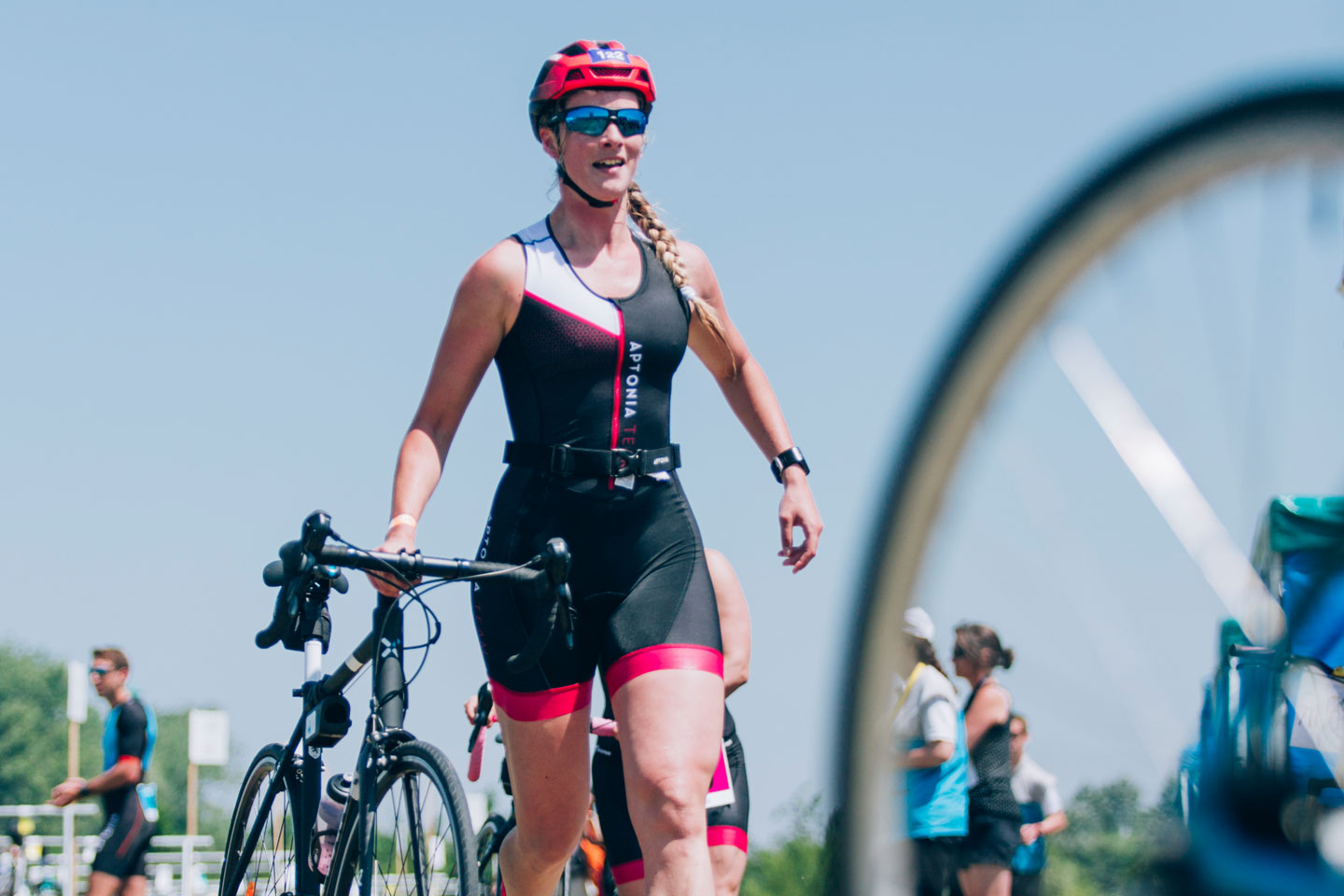

Featured
What Is A Triathlon Sprint
Modified: January 2, 2024
Learn all about the featured triathlon sprint, including the distances, training tips, and how to get started in this exciting multisport event.
Introduction
A triathlon sprint is an exciting and challenging multi-sport event that combines swimming, cycling, and running. It is a popular race format that attracts athletes of all levels, from beginners looking to test their limits to experienced competitors striving for personal bests. This article will provide an overview of what a triathlon sprint entails, including the distances involved, the different segments of the race, and tips for successful completion.
Triathlon sprints offer a unique and exhilarating experience for participants, demanding not only physical endurance but also mental resilience. The event showcases the athlete’s ability to transition smoothly between the three disciplines, requiring strategic planning, energy management, and efficient pacing.
Whether you are a novice or a seasoned athlete, participating in a triathlon sprint can be a transformative and rewarding endeavor. It pushes you to break boundaries, embrace new challenges, and discover the immense strength and determination within yourself.
In this article, we will delve into the various aspects of a triathlon sprint, from the definition and distances to the specific segments of swimming, cycling, and running. We will also explore the importance of transition areas and provide training tips tailored for a successful triathlon sprint.
So, if you are ready to take on the exhilarating and physically demanding journey of a triathlon sprint, continue reading to learn everything you need to know.
Definition of Triathlon Sprint
A triathlon sprint is a shorter distance variant of the traditional triathlon race. Unlike the longer and more grueling Ironman or Olympic distance triathlons, a sprint triathlon is designed to be more accessible to athletes of all levels, including beginners. While the exact distances may vary, a standard triathlon sprint typically involves a 750-meter swim, a 20-kilometer bike ride, and a 5-kilometer run.
What sets a triathlon sprint apart from other triathlon formats is its emphasis on speed and intensity. The shorter distances require athletes to push themselves to their limits, maintaining a high level of effort and pace throughout the race. This makes the event a great option for individuals who are looking to experience the thrill of a triathlon without committing to the longer training hours required by longer distances.
Triathlon sprints are usually held in a non-drafting format, meaning that athletes are not allowed to closely follow or receive any assistance from other competitors during the cycling segment. This adds an element of individuality and self-reliance to the race, as athletes must rely solely on their own abilities and strategies to succeed.
One of the great advantages of participating in a triathlon sprint is the shorter time commitment compared to longer distances. While an Ironman triathlon can take an entire day or more to complete, a triathlon sprint can usually be finished in just a few hours. This makes it more feasible for individuals with busy schedules or those new to the sport who may not have the time or endurance for longer races.
Distances in a Triathlon Sprint
Triathlon sprints are known for their shorter distances compared to other triathlon formats. The specific distances may vary slightly depending on the race organizer, but the standard distances for a triathlon sprint are typically a 750-meter swim, a 20-kilometer bike ride, and a 5-kilometer run.
The swim segment of a triathlon sprint is usually conducted in a pool or open water, such as a lake or the ocean. Participants start the swim by entering the water and navigating through a designated course, either completing a series of laps or swimming from point to point. The swim distance in a triathlon sprint is typically shorter than in longer races, allowing athletes to focus on speed and efficiency.
Following the swim, participants transition to the bike segment of the race. The bike course is usually a designated route that takes athletes through a mix of roads, including some hills and turns. The distance for the bike segment of a triathlon sprint is commonly set at 20 kilometers, requiring participants to showcase their cycling skills and maintain a steady speed throughout the course. It is important to note that drafting, or closely following another competitor’s wheel to reduce wind resistance, is not allowed in most triathlon sprint events.
After completing the bike leg, participants transition once again, this time to the run segment of the triathlon sprint. The run course varies in terrain, ranging from paved roads to trails or a combination of both. The distance for the run segment is typically set at 5 kilometers, challenging athletes to dig deep and maintain a strong pace as they approach the finish line.
These distances may seem intimidating to newcomers, but rest assured that with proper training and preparation, completing a triathlon sprint is well within reach for individuals with a moderate fitness level. The combination of swimming, biking, and running in a triathlon sprint provides a well-rounded physical challenge that allows athletes to showcase their endurance, speed, and overall athleticism.
Swim Segment
The swim segment is the first discipline in a triathlon sprint, and it sets the tone for the rest of the race. It tests athletes’ strength, endurance, and technique in the water. The swim distance in a triathlon sprint is typically 750 meters, but it can vary depending on the race organizer and venue.
The swim segment of a triathlon sprint can take place in a pool or open water. If it occurs in a pool, athletes are typically assigned lanes and start at staggered intervals, with each participant swimming a set number of laps to complete the required distance. Open water swims, on the other hand, might take place in a lake, river, or ocean. Athletes start together and navigate through a marked course, usually consisting of buoys or other markers.
Swimming in open water presents unique challenges compared to a pool environment. Athletes must contend with factors like currents, waves, and potentially limited visibility. It is crucial for participants to practice open water swimming techniques, breathing control, and navigation skills before the race to ensure a smooth and confident swim.
Efficiency and technique are essential in the swim segment to conserve energy for the rest of the race. Proper body position, breathing rhythm, and a steady stroke can make a significant difference in overall performance. It is advisable to practice open water swimming and incorporate drills that focus on stroke technique and speed in training.
Wetsuits are often permitted in triathlon sprints, especially if the water temperature falls below certain guidelines. Wearing a wetsuit can offer buoyancy and insulation, improving swim times and contributing to overall comfort in the water. It is recommended to train with a wetsuit if it will be worn on race day to become familiar with the sensation and to ensure a proper fit.
During the swim segment, it is important to maintain situational awareness and respect fellow competitors. While it can be competitive, ensuring a safe and enjoyable experience for all participants is paramount. It is common for the swim segment to have safety personnel in kayaks or on paddleboards monitoring the course and providing assistance if needed.
Proper preparation, including swim training sessions and open water practice, will boost confidence and competence in the water. By focusing on technique, building endurance, and acclimating to different swim environments, athletes can start their triathlon sprint with a strong and confident swim.
Bike Segment
The bike segment is a critical part of a triathlon sprint, testing athletes’ speed, endurance, and cycling skills. Participants transition from the swim to the bike segment, where they cover a distance of approximately 20 kilometers. This segment is a blend of strength, strategy, and technical proficiency.
The bike course in a triathlon sprint is usually on roads, offering a mix of terrain, including flats, climbs, descents, and turns. Athletes need to anticipate and adjust their speed accordingly to navigate the course safely and efficiently. It is crucial to familiarize oneself with the course, especially any challenging sections or turns, before the race to optimize performance.
Drafting, or closely following another competitor’s wheel to reduce wind resistance, is generally not allowed in most triathlon sprint events. Athletes must maintain a certain distance from the participant in front, typically around 10 meters, to ensure fairness and prioritize individual effort. It is crucial to understand and adhere to the specific drafting rules established by the race organizer to avoid any penalties.
Cycling is a sport that requires both physical fitness and technical skill. It is important to have a well-maintained and properly fitted bike for the race. Regular bike maintenance, such as checking tire pressure, brakes, and gears, is recommended to eliminate any potential issues during the race. Proper bike fit, including saddle height, handlebar position, and pedal alignment, is essential for comfort and efficiency.
Aerodynamics play a significant role in the bike segment. Athletes can optimize their speed by adopting a streamlined position, tucking their elbows in, and minimizing wind resistance. Training sessions that focus on bike handling skills, such as cornering, descending, and climbing, can improve confidence and performance on race day.
Nutrition and hydration during the bike segment are crucial to maintain energy levels throughout the race. It is advisable to consume small, easily digestible snacks and fluids at regular intervals to prevent fatigue and dehydration. It is essential to practice nutrition strategies during training to find what works best for individual needs.
Transitioning smoothly from swimming to biking is crucial to save time and maintain momentum. It is recommended to practice transition sequences during training, including efficiently changing from a wetsuit to cycling gear, mounting and dismounting the bike, and quickly getting onto the road.
The bike segment offers an opportunity to make up time and gain positions in the overall race. By pacing oneself, maintaining a steady effort, and strategically managing energy reserves, athletes can set themselves up for a successful run segment. A strong bike segment can boost confidence and help set a positive tone for the remainder of the race.
Run Segment
The run segment is the final discipline of a triathlon sprint, where participants showcase their endurance, mental strength, and running prowess. After completing the swim and bike segments, athletes transition to the run, typically covering a distance of 5 kilometers.
The run course in a triathlon sprint can vary, ranging from paved roads to trails or a combination of both. It is essential to familiarize oneself with the course beforehand, paying attention to any challenging sections, uneven terrain, or potential obstacles. This knowledge allows athletes to strategize and adjust their pace accordingly.
Transitioning from the bike to the run requires a shift in physical and mental focus. It is normal to experience a transition period where the legs adjust to the different demands of running after cycling. Training sessions that incorporate brick workouts, where a bike ride is immediately followed by a run, can help prepare the body for this transition.
Pacing is crucial in the run segment. It is tempting to start at a fast pace, but maintaining a steady and sustainable speed is key to optimizing performance and avoiding burnout. It is beneficial to practice different running paces during training to gauge one’s capabilities and find the ideal rhythm for race day.
Hydration and nutrition play a vital role in the run segment, especially for longer triathlon sprints. Proper fluid intake, such as water and sports drinks, is important to prevent dehydration and maintain electrolyte balance. It is advisable to have a hydration plan in place, considering factors like distance, weather conditions, and personal needs.
Mental strength and focus are challenged in the run segment, particularly as fatigue sets in. Techniques such as positive self-talk, visualization, and breaking down the distance into smaller, manageable increments can help maintain motivation and push through any physical discomfort.
Form and technique are also important in the run segment. Maintaining proper posture, stride length, and foot strike can improve efficiency and reduce the risk of injury. It is recommended to incorporate strength and flexibility exercises into training to develop a strong foundation and support running performance.
Spectators and fellow competitors can provide a boost of motivation and encouragement during the run segment. It is not unusual for supporters to line the course, cheering and offering words of encouragement. Drawing from this energy and focusing on personal goals can help athletes push through challenges and give their best effort.
The run segment is the final stretch toward the finish line, and crossing it is a moment of triumph and accomplishment. By pacing oneself, maintaining mental resilience, and adopting efficient running techniques, athletes can finish the triathlon sprint with a strong and confident run.
Transition Areas
Transition areas are a crucial component of a triathlon sprint, serving as the hubs where athletes switch from one discipline to another. Efficient transitions can save valuable time and contribute to overall race performance. There are two main transition areas in a triathlon sprint: T1 (swim-to-bike) and T2 (bike-to-run).
T1, or the swim-to-bike transition, is where participants change from swim gear to cycling attire. Upon exiting the water, athletes enter the transition area to locate their designated spot, often marked by race numbers or signs. Organizing belongings in a systematic manner allows for ease and speed during the transition.
In T1, athletes remove their wetsuits (if worn) and put on their cycling gear, including a helmet, shoes, and any necessary accessories like sunglasses or gloves. It is important to layout items in sequential order to streamline the process. Practice and familiarity with these transitions during training are critical to minimize time and optimize efficiency.
Once ready, athletes walk or jog their bikes to the designated mount line and commence the bike leg. It is crucial to follow any specific rules or guidelines set by the race organizer regarding mounting and dismounting the bike in the transition area to ensure safety and fairness.
T2, or the bike-to-run transition, takes place after completing the cycling segment. Athletes return to the transition area, dismount their bikes at the designated dismount line, and proceed to their respective spots. They remove their cycling gear and put on their running shoes and any additional items needed for the run segment.
During T2, athletes should make any necessary adjustments, such as loosening shoelaces or securing race bibs. Maintaining a clear and organized transition area is key to a smooth and efficient transition. Having the appropriate supplies, such as towels, spare socks, or quick-drying clothes, can aid in comfort and convenience during the transition.
It is essential to note the layout and marking of the transition area before the race to ensure a seamless transition. Familiarizing oneself with the location of the bike rack, entrance and exit points, and the specific flow of the course can minimize confusion and reduce transition times.
Efficiency and speed are paramount in transition areas. Athletes can practice transition drills, simulating the switch between disciplines, to develop muscle memory and optimize their transition times. Time spent in transition is considered “free time” and can significantly impact overall race performance.
Transition areas can be lively and crowded, with athletes frantically preparing for the next leg of the race. However, it is important to remain calm and focused, executing each transition deliberately and efficiently. By maintaining a clear plan, practicing transitions, and staying organized, athletes can seamlessly move through the transition areas and gain an advantage over their competitors.
Training for a Triathlon Sprint
Training for a triathlon sprint requires a well-rounded approach that focuses on building endurance, improving technique, and preparing for the demands of all three disciplines. Whether you are a beginner or an experienced athlete, a structured training plan can help you reach your goals and perform at your best on race day.
Start by establishing a training schedule that includes sufficient time for each discipline: swimming, biking, and running. Gradually increase your training volume and intensity over time to build your fitness level and adapt your body to the demands of the race.
Swimming is often the discipline that many triathlon competitors struggle with the most. Incorporate swim sessions into your training plan at least two to three times per week. Focus on improving your technique, including proper body position, breathing control, and stroke efficiency. Consider working with a swim coach or joining a swim club to refine your skills and increase your confidence in the water.
For the bike segment, aim for at least three rides per week, varying in duration and intensity. Include hill training to strengthen your legs and improve your climbing abilities. Longer rides will help build endurance, while interval training will improve your speed and power output. Don’t forget to practice nutrition and hydration strategies during your bike training to optimize your performance on race day.
Running is the final discipline of a triathlon sprint. Incorporate regular running sessions into your training plan, focusing on building both endurance and speed. Incorporate various types of runs, including long slow runs, tempo runs, and speed intervals, to improve your running efficiency and cardiovascular fitness. Remember to include rest days in your plan to allow your body to recover and avoid overtraining.
In addition to specific discipline training, it is crucial to practice the transitions between each segment. Incorporate brick workouts into your training, where you simulate the swim-to-bike and bike-to-run transitions. This will help your body adapt to the unique sensations and physical demands of moving from one discipline to another.
Strength and flexibility training are also essential to support your overall performance and reduce the risk of injury. Include exercises that target the core, leg muscles, and upper body to improve stability, power, and endurance. Include stretching and mobility work to maintain flexibility, which is crucial for efficient movement in all three disciplines.
Lastly, don’t forget about rest and recovery. Plan regular rest days to allow your body to recuperate and adapt to the training stress. Adequate sleep, proper nutrition, and hydration are also crucial for your overall well-being and performance.
Remember, every athlete is unique, and it’s important to listen to your body. Adjust your training plan as needed based on your progress, fitness level, and any potential limitations or injuries.
With consistent training, dedication, and a well-structured plan, you can prepare yourself physically and mentally for the challenge of a triathlon sprint. Stay focused, believe in your abilities, and enjoy the journey to becoming a triathlete.
Tips for Successfully Completing a Triathlon Sprint
Completing a triathlon sprint is an accomplishment that requires dedication, preparation, and a strategic approach. To help you have a successful race, we have compiled a list of essential tips:
- Start with a realistic training plan: Create a training plan that suits your fitness level, schedule, and goals. Gradually increase the intensity and duration of your workouts to avoid overtraining and minimize the risk of injuries.
- Practice open water swims: If the triathlon includes an open water swim, practice swimming in similar conditions to familiarize yourself with the challenges of currents, waves, and limited visibility.
- Master your transitions: Practice transitioning smoothly between disciplines. Set up a mock transition area during training and rehearse the sequence of changing gear efficiently.
- Do brick workouts: Incorporate brick workouts into your training routine, where you combine two disciplines back-to-back, such as swim-to-bike or bike-to-run. This will help your body adapt to the unique demands of transitioning between disciplines.
- Focus on nutrition and hydration: Develop a nutrition plan for before, during, and after the race. Practice fueling strategies during training to ensure you have enough energy to sustain your performance. Stay hydrated throughout the race by drinking water or sports drinks at regular intervals.
- Get familiar with the race course: Study the race course, including the swim course, bike route, and run course. Pay attention to any challenging sections, hills, or turns. Knowing the course in advance will help you plan your strategy and anticipate what to expect.
- Maintain a steady pace: Pace yourself during the race, especially during the swim and bike segments. It’s better to start conservative and gradually increase your effort as the race progresses, ensuring you have enough energy for the run.
- Listen to your body: Learn to gauge your body’s signals during training and the race. If you experience pain, fatigue, or any concerning symptoms, don’t push through it. Know when to rest, seek medical attention if needed, and make adjustments to your plan if necessary.
- Enjoy the experience: Remember to have fun and enjoy the journey. Triathlon sprints are a unique opportunity to challenge yourself physically and mentally. Embrace the excitement and celebrate your accomplishments along the way.
Following these tips will help you navigate the triathlon sprint with confidence and increase your chances of a successful race. Remember, each triathlon is a learning experience, so stay positive, stay focused, and keep pushing yourself to reach your personal best.
Conclusion
Participating in a triathlon sprint is an exhilarating and rewarding experience that challenges your physical and mental capabilities. It is a test of endurance, skill, and determination, requiring you to push yourself beyond your comfort zone and achieve personal milestones.
In this article, we provided an overview of what a triathlon sprint entails, from the definition and distances to the specific segments of swimming, cycling, and running. We explored the importance of transition areas and provided training tips tailored for a successful triathlon sprint.
To successfully complete a triathlon sprint, it is essential to have a well-rounded training plan that focuses on each discipline, incorporating techniques, endurance building, and transition practice. Proper nutrition, hydration, and rest are also key factors in optimizing performance and ensuring a strong race day.
Remember that every triathlon sprint is a unique journey, and the most important thing is to enjoy the experience. Embrace the challenge, celebrate your accomplishments, and take pride in the hard work and commitment you put into your training.
Whether you are a beginner or a seasoned athlete, participating in a triathlon sprint can be a transformative and life-changing experience. It offers an opportunity to push your boundaries, discover your inner strength, and join a community of like-minded individuals who share the passion for triathlon.
So, lace up your shoes, strap on your helmet, and dive headfirst into the world of triathlon sprints. With dedication, perseverance, and a clear focus, you can conquer the triathlon sprint and emerge with a sense of accomplishment that will stay with you long after crossing the finish line.
